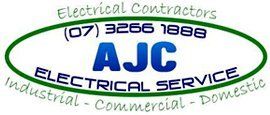
It's hard not to get excited when the temperature starts to rise, and the leaves begin to grow back on the trees. Spring means summer is on its way, and this season is one when many homeowners make a list of chores to tackle before it gets too hot.
One important task many homeowners overlook when making the spring clean list is a check of the home's electrical system. There are three ways your electrics benefit from a once-over by an electrician before heavy usage begins.
Pest or Rodent Wiring Damage
Nobody wants to hang outside in the cold during the winter, and that includes pests and rodents. Rats, mice and even possums prefer to find somewhere cosy and snug to hide out until spring arrives. The problem with these creatures taking up residence in your house is the damage they can do to your wiring.
You may not immediately see evidence of rodents in your home, and this is especially so if they choose to stay up in your roof area rather than venturing into the kitchen. However, rodents chewing on your wiring in the roof or wall cavities leads to a fire hazard in your home.
Once their teeth break through the plastic shielding the wires beneath, the wires can spark or short out. If you notice outlets haphazardly working, this is a sign of electrical shorting, and you need an electrician to find the problem and fix it.
Corrosion Damage to Outdoor Electrical Points
Checking your outdoor lighting as part of your spring cleaning list is another must-do since many families love to spend time entertaining outdoors during summer. The moist air of winter can corrode the metal fixtures of your outdoor lights, so head out and check each one.
Firstly, turn each of the outdoor lights on one by one. If the light bulb does not work, replace it with a new one. If the new bulb blows out within the first 48 hours of being inserted, look at the metal socket for signs of corrosion. Surface rust can be washed away using soapy water and a rag, but rust that has eaten into the metal socket means you need a new one. Run your finger across the corrosion to feel for signs of unevenness in the metal. This unevenness is a sign corrosion has eaten into the metal.
The reason why corroded sockets are dangerous is that they cause heat to build up, which in turns causes the light bulb to blow. If you are lucky, it is only the filament within the light bulbs that explodes due to this overheating rather than the whole light bulb itself. An electrician can replace the damaged socket for you.
Reducing Energy Costs Before Summer
The warm months of the year are also a time when you see an increase in your electricity bill. Air conditioning by itself can account for close to a quarter of the amount you are paying to your electricity provider. Before spring turns to summer, having an energy audit conducted in your home can save you money long term.
Calling an electrician is the fastest way to get an audit done. Some appliances use more energy than others. Having an electrician point out which ones are higher energy users allows you to make a decision whether you should replace them or whether they should only be run during the off-peak electricity periods so you can save money. Lighting is another area you can save costs by replacing high energy usage light bulbs with lower usage models.
When it comes to spring cleaning your home's electrical system, the team at AJC Electrical Service can help with all the repairs or replacements you need to make sure the only thing you'll be doing this summer is enjoying some time at the beach.
Whether you run a dairy processing plant or a local butcher shop, you likely rely heavily on stainless steel trays, trolleys and mechanised equipment. Stainless steel provides one of the most sanitary and durable surfaces, making it an obvious choice in food service settings.
However, to keep your stainless steel safe, clean and useable over time, you must start with the correct metal and perform routine maintenance.
In this blog, we guide you through the process of maintaining sanitary stainless steel equipment when you process or serve food.
1. Choose Stainless Steel Equipment With the Correct Finish
Contractors use stainless steel in a wide variety of applications, including in domestic homes and commercial kitchens. Because stainless steel has so many uses, it comes in a number of finishes.
When you commission custom equipment or purchase standard equipment, double check that you choose a foodgrade finish. Your equipment must strictly adhere to food sanitation standards in your area. Your fabricator can help you decide on the correct finish for your industry.
2. Place Your Equipment Within Reach of Your Employees
Most stainless steel machinery used for food-related tasks requires frequent cleaning. To make this process easier and safer for your employees, place all your equipment within reasonable reach.
Additionally, train your employees to correctly disassemble, clean and reassemble each piece of equipment.
3. Separate Detachable Components From Stationary Pieces
Mixers, trolleys and fermentation receptacles often have multiple components that fit together. When you clean your equipment, ensure that you remove all detachable parts and clean them separately from the fixed components. This step prevents hidden corrosion and cross-contamination.
If possible, clean all detachable pieces by hand and allow all of your equipment to air dry before you reassemble it.
4. Clean Away Organic Contaminants
When you work with food products, especially meat, dairy and fermented liquids, your equipment can gather organic contaminants which stick to the surface. Your first step when you clean is to eliminate these remnants.
Use an alkaline cleaning solution. Most brewers and dairy processing companies use cleaning agents with sodium hydroxide for this purpose.
5. Neutralise Harsh Cleaning Solutions
Once you get rid of organic contaminants, immediately move on to the next step. Harsh cleaners can etch or corrode stainless steel if left on too long.
To neutralise the sodium hydroxide and remove inorganic contaminants, clean with muriatic acid and phosphoric acid.
If you have questions about commissioning or maintaining a specialised piece of equipment, speak to one of the knowledgeable staff members at AJC Metal Products Pty Ltd. We have decades of experience with metal used in a variety of industries, including food services. We're happy to help you get the most out of your stainless steel products.
To learn more about the use of stainless steel as an industrial metal, read our blog ' The Advantages of Stainless Steel .'
During the course of a typical day, you may not think much about your electrical system. When you reach out to turn on the lights or power up an electronic device, you expect your electrical output to respond automatically.
However, if you often deal with blown fuses, tripped circuits or flickering lights, your electrical switchboard may need some prompt a ttention. Smart home or business owners pay attention to these signals before further problems arise.
Pay Attention to the Signs
If you don't know much about circuitry, you're not alone. However, if you don't even know where your electrical switchboard is, you can take steps to remedy this oversight at home or at work.
Take a Look at Your Switchboard
In your home, you can find most switchboards in the garage or inside a utility closet. At work, you may have multiple switchboards depending on the size of your facility. If your switchboard is in an unusual place, you may simply need to search for it.
Unless your property is old, your switchboard should be high enough that it's easy to reach, but not so high that you need a stepla dder to access it. Modern electrical practises determine the height of a switchboard. If it's too high or too low, you may need an upgrade.
Once you find your switchboard, take a look inside. You'll notice several switches (hence, the name of the board) and busbars (flat metal strips that connect to switchgear and carry electrical currents through your home or building).
All modern switchboards protect the user from electrical harm by way of fuses and safety switches. If you see bare connections and antique wiring, call an electrician. Don't risk an accident!
Watch for Old-Fashioned Components
Another sign of an old or ailing switchboard is ceramic connections. These indicate that your switchboard (and property) are old, an d probably aren't up to the latest electrical codes. If you blow fuses frequently, you may have an old-fashioned ceramic board.
Remember, when your circuitry was installed, it probably needed to support an oven and refrigerator at minimum (and possibly a w ashing machine). Our modern era has to support many more appliances than in the old days-and old circuitry can't match those demand s.
Watch for old switches and light boxes, perhaps in an older section of your home that you plan to renovate. These, too, need attent ion. However, the switchboard is your first priority.
Even if you have modern circuitry but few (or no) safety outlets, you're only partially protected from fire risks and short circuits.
Rely on a Professional to Upgrade Your Switchboard
If you're worried about a house fire or a circuitry overload, it pays to ask for a professional inspection. Your licensed electrician know s just what to look for, and you'll feel greater peace of mind after you update your electrical system.
Here's what to do during the inspection:
- Answer your electrician's questions about your electrical usage patterns. This helps him or her determine whether your circuitry mat ches those needs.
- Count all your appliances and electronic devices. Also, pay attention to how many power strips you plug into a given outlet.
- Test your outlets and fully inspect your switchboard. This ensures that you are up to the current Australian Standard.
- Get a price estimate after the inspection. Fuse boxes and a new switchboard are generally well under $1,000. However, you'll double
- Get a price estimate after the inspection. Fuse boxes and a new switchboard are generally well under $1,000. However, you'll double the price if you need additional cabling. Rewiring an entire building is the most expensive option (usually at least $5,000).
Ask your electrician to itemise your quote so you understand all the factors and procedures that add up to your total costs.
In the end, you can be smart about your switchboard by paying attention to the warning signs before you upgrade-and by contacti ng your licensed electrician ahead of dangers like house fires or equipment damage.
